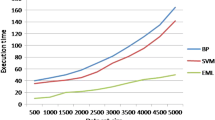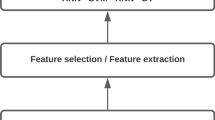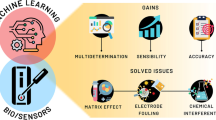Abstract
Sensor nodes are tiny low-cost devices prone to various faults. So, it is imperative to detect those faults. This paper presents a sensor measurement fault detection algorithm based on Pearson’s correlation coefficient and the Support Vector Machine(SVM) algorithm. As environmental phenomena are spatially and temporally correlated but faults are somewhat uncorrelated, Pearson’s correlation coefficient is used to measure correlation. Then SVM was used to classify faulty readings from normal readings. After classification, faulty readings are discarded. Here each sensor nodes periodically collects environmental features and sends them to their associated cluster heads. Each cluster head analyze collected data using the classification algorithm to detect whether any fault is present or not. Network simulator NS-2.35 and Matlab are used for evaluation of our proposed method. The fault detection algorithm was evaluated using performance metrics, namely, Accuracy, Precision, Sensitivity, Specificity, Recall, \(F_1\) Score, Geometric Mean(G_mean), Receiver Operating Characteristics (ROC), and Area Under Curve(AUC). Performance evaluation shows, the proposed method performs well for high fault percentages.





Similar content being viewed by others
References
Chen, P. Y., Yang, S., & McCann, J. A. (2015). Distributed real-time anomaly detection in networked industrial sensing systems. IEEE Transactions on Industrial Electronics, 62(6), 3832–3842.
Cortes, C., & Vapnik, V. (1995). Support-vector networks. Machine learning, 20(3), 273–297.
Fall, K., Varadhan, K., et al. (2005). The ns manual (formerly ns notes and documentation). The VINT project, 47, 19–231.
Guesmi, H., Ben Salem, S., & Bacha, K. (2015). Smart wireless sensor networks for online faults diagnosis in induction machine. Computers & Electrical Engineering, 41, 226–239. https://doi.org/10.1016/j.compeleceng.2014.10.015.
Jan, S. U., Lee, Y. D., & Koo, I. S. (2021). A distributed sensor-fault detection and diagnosis framework using machine learning. Information Sciences, 547, 777–796. https://doi.org/10.1016/j.ins.2020.08.068.
Japkowicz, N., & Shah, M. (2011). Evaluating learning algorithms: A classification perspective. Cambridge: Cambridge University Press.
Krishnamachari, B., & Iyengar, S. (2004). Distributed bayesian algorithms for fault-tolerant event region detection in wireless sensor networks. IEEE Transactions on Computers, 53(3), 241–250.
Muhammed, T., & Shaikh, R. A. (2017). An analysis of fault detection strategies in wireless sensor networks. Journal of Network and Computer Applications, 78, 267–287. https://doi.org/10.1016/j.jnca.2016.10.019.
Ng, A. (2000). Cs229 lecture notes. CS229 Lecture notes, 1(1), 1–3.
Priya, K.C.K., & Terence, S. (2013). Retp: Reliable event transmission protocol in a wireless sensor network. In 2013 IEEE International Conference ON Emerging Trends in Computing, Communication and Nanotechnology (ICECCN) (pp. 181–188), https://doi.org/10.1109/ICE-CCN.2013.6528489
Saeedi Emadi, H., & Mazinani, S. M. (2018). A novel anomaly detection algorithm using dbscan and svm in wireless sensor networks. Wireless Personal Communications, 98(2), 2025–2035. https://doi.org/10.1007/s11277-017-4961-1
Suthaharan, S., Alzahrani, M., Rajasegarar, S., Leckie, C., & Palaniswami, M. (2010). Labelled data collection for anomaly detection in wireless sensor networks. In 2010 Sixth International Conference on Intelligent Sensors, Sensor Networks and Information Processing (pp. 269–274), https://doi.org/10.1109/ISSNIP.2010.5706782
Swain, R. R., & Khilar, P. M. (2017). Composite fault diagnosis in wireless sensor networks using neural networks. Wireless Personal Communications, 95(3), 2507–2548. https://doi.org/10.1007/s11277-016-3931-3
Swain, R. R., Khilar, P. M., & Bhoi, S. K. (2018). Heterogeneous fault diagnosis for wireless sensor networks. Ad Hoc Networks, 69, 15–37. https://doi.org/10.1016/j.adhoc.2017.10.012.
Swain, R. R., Dash, T., & Khilar, P. M. (2019). A complete diagnosis of faulty sensor modules in a wireless sensor network. Ad Hoc Networks, 93, 101924. https://doi.org/10.1016/j.adhoc.2019.101924.
Ting, K.M. (2010). Confusion Matrix, Springer US, Boston, MA, pp 209–209. https://doi.org/10.1007/978-0-387-30164-8_157
Titouna, C., Naït-Abdesselam, F., & Khokhar, A. (2019). Dods: A distributed outlier detection scheme for wireless sensor networks. Computer Networks, 161, 93–101. https://doi.org/10.1016/j.comnet.2019.06.014.
Tsang, I. W., Kwok, J. T., & Cheung, P. M. (2005). Core vector machines: Fast svm training on very large data sets. Journal of Machine Learning Research, 6(13), 363–392. http://jmlr.org/papers/v6/tsang05a.html.
Ul Islam, R., Hossain, M. S., & Andersson, K. (2018). A novel anomaly detection algorithm for sensor data under uncertainty. Soft Computing, 22(5), 1623–1639. https://doi.org/10.1007/s00500-016-2425-2
Wright, S. (1921). Correlation and causation. Journal of Agricultural Research, 20, 557–580.
Zidi, S., Moulahi, T., & Alaya, B. (2018). Fault detection in wireless sensor networks through svm classifier. IEEE Sensors Journal, 18(1), 340–347. https://doi.org/10.1109/JSEN.2017.2771226
Author information
Authors and Affiliations
Corresponding author
Ethics declarations
Conflict of interest
The authors declare that they do not have any conflict of interest.
Additional information
Publisher's Note
Springer Nature remains neutral with regard to jurisdictional claims in published maps and institutional affiliations.
Rights and permissions
About this article
Cite this article
Biswas, P., Samanta, T. A Method for Fault Detection in Wireless Sensor Network Based on Pearson’s Correlation Coefficient and Support Vector Machine Classification. Wireless Pers Commun 123, 2649–2664 (2022). https://doi.org/10.1007/s11277-021-09257-7
Accepted:
Published:
Issue Date:
DOI: https://doi.org/10.1007/s11277-021-09257-7




